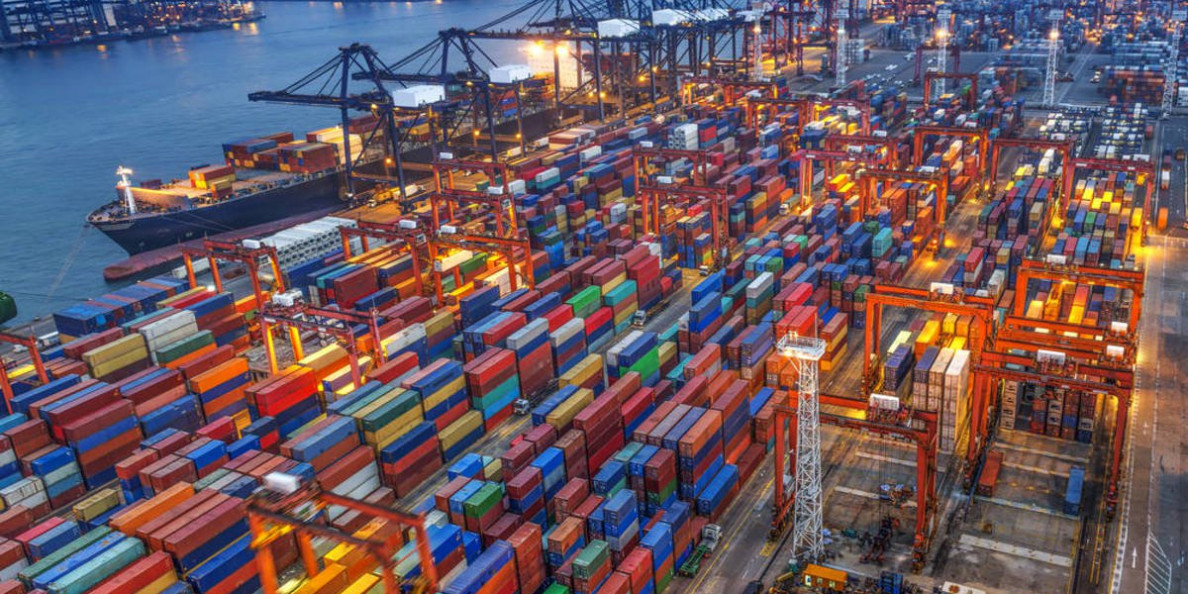“We don’t want a trade war,” says Texas A&M AgriLife Extension economist Luis Ribera. “Nobody wins, and consumers pay the price.”
Ribera, director of the Center for North American Studies and program director for International Projects with the Agricultural and Food Policy Center at A&M, discussed the importance of agriculture trade Thursday in a webinar hosted by University of Arkansas Extension economist Bobby Coats.
Ribera covered a wide range of trade-related topics in a 90-minute presentation, Agricultural Trade: China, NAFTA and Brazilian Agriculture in Focus.
(Trade issues with China, NAFTA and Brazil will be covered in subsequent articles.)
With 35 percent of U.S. farm income derived from exports, foreign trade could not be more important, Ribera says. “The United States is the world’s largest agricultural exporter,” he added, “valued at $138 billion annually.”
The U.S. exports 76 percent of the cotton crop, 50 percent of soybeans, 59 percent of sorghum, 55 percent of the rice crop, 46 percent of wheat, 20 percent of corn, and 21 percent of pork, according to May USDA figures. A large percentage of nut and other specialty crops are also exported.
Ribera says even though the U.S. exports a relatively small percentage of the corn crop, U.S. corn farmers fill from 50 percent to 60 percent of the world corn trade.
Trade disputes, Ribera says, typically hurt agriculture. “We need to work on opening more markets, not closing them.”
He says negative connotations from the Trump administration regarding claims that trade imbalances are always a negative do not consider the value of buying products from other countries.
“We are able to buy products that are either not available here or can be produced more efficiently elsewhere,” he said. “Without imports, we would see a lifestyle change. Now, we can always find tomatoes in the grocery, not just when they are in season in the U.S. We have bananas. We have a constant supply of produce.”
He adds that in recent years the U.S. has had a negative trade balance with Mexico. “We sell more products by volume to Mexico than we export,” he said. “But Mexico exports a lot of high value products to the U.S. It’s a simple case of supply and demand with trade deficits.”
He says imports also stimulate the economy, creating jobs for shippers, packers and retailers, among others.
Who Benefits from Trade?
Trade agreements provide benefits to both the U.S. and to trading partners. “The more trade agreements we sign, the more trade we see,” he says. “We can’t quantify that precisely, but we do see a big correlation.”
He says other factors affect trade, including increased purchasing power in emerging economies. “We expect the world population to reach 10 billion by 2050, but things have changed.”
The big difference now, he says, compared to earlier projections of population growth, is that people have money. “For instance, China has always had a lot of people, but they did not have a lot of money and persisted on mostly grain diets.”
As Chinese and other emerging economies develop middle classes, people want to add protein, meat to their diets. The increased purchasing power creates demand and opportunities for trade, Ribera explains.
He says China has the option of importing meat products or producing it domestically. Either option opens trade opportunities, either for the protein or for grains to feed livestock.
Ribera says the U.S. is a valued trading partner. “The U.S. holds 25 percent of the world’s money. That’s a huge market and power to negotiate trade agreements. We have a large population with money and with only 6.3 percent of disposable income spent on food, a lot of demand for other products.”
Ribera says China’s trade practices warrant scrutiny. Theft of intellectual property, for instance, is rampant and recognized by others, including the European Union. “I agree with the administration that it’s definitely an issue. But this approach is losing markets.
“The issue is understandable, but how to get China on the stand (to answer for transgressions) is a matter of opinion,” Ribera says.
Tariffs and trade wars, he says, mean higher costs for the Chinese people, who already spend 25 percent of disposable income for food. “China is a big market for U.S. agriculture products.” Tariffs put that market in jeopardy. “The Chinese people don’t want tariffs either.”
He adds that bilateral trade agreements are important but that inking those pacts with every trading partner is infeasible. “It’s not practical to negotiate a trade agreement with every country.”
He also notes that losing market share is not just a short-term loss. “Once we lose market share, it is hard to get it back. It’s expensive for trading partners to switch, but tariffs offer an opportunity to change partners.
“Having a trade war is not the way to go,” he said, “for producers or consumers.”


